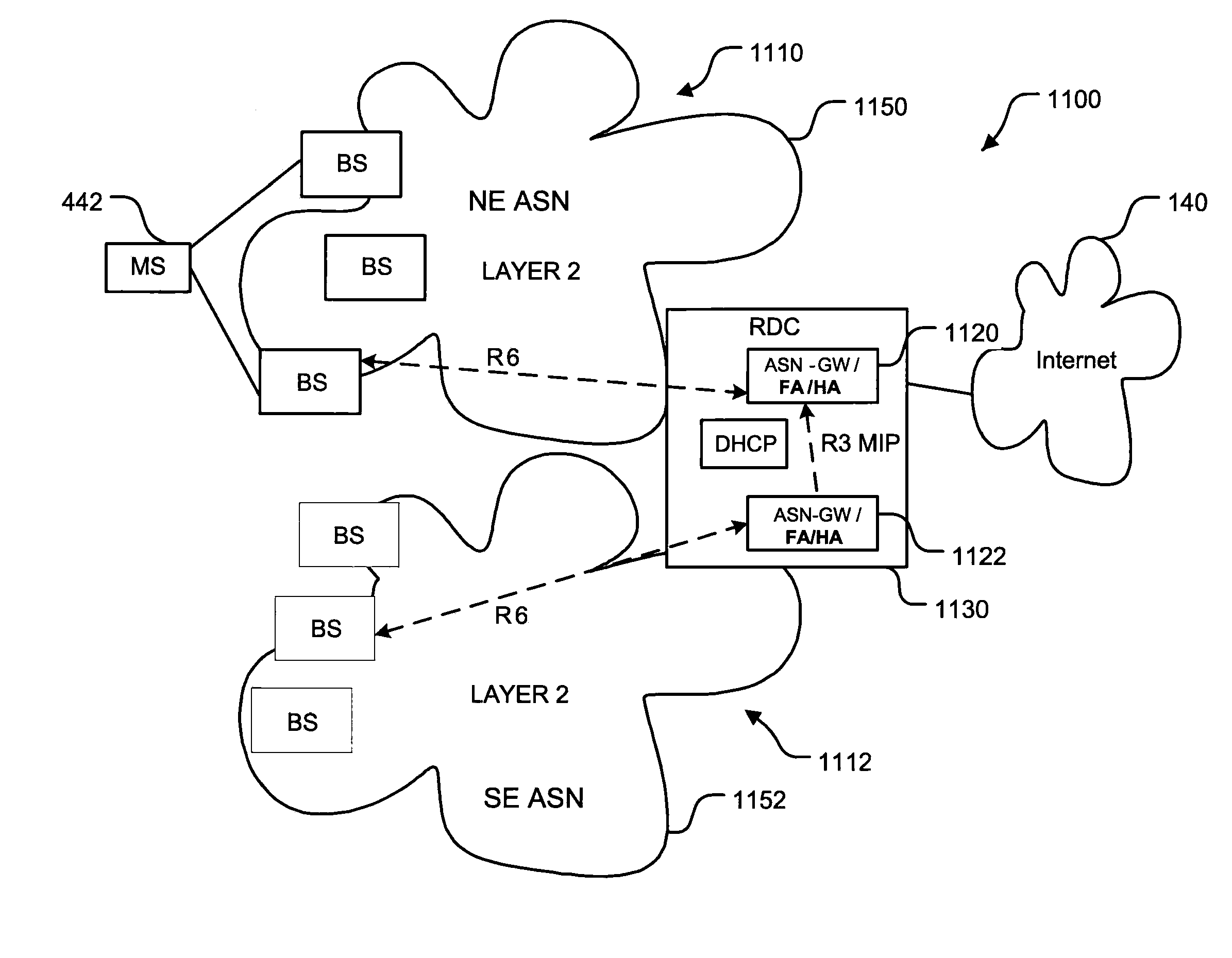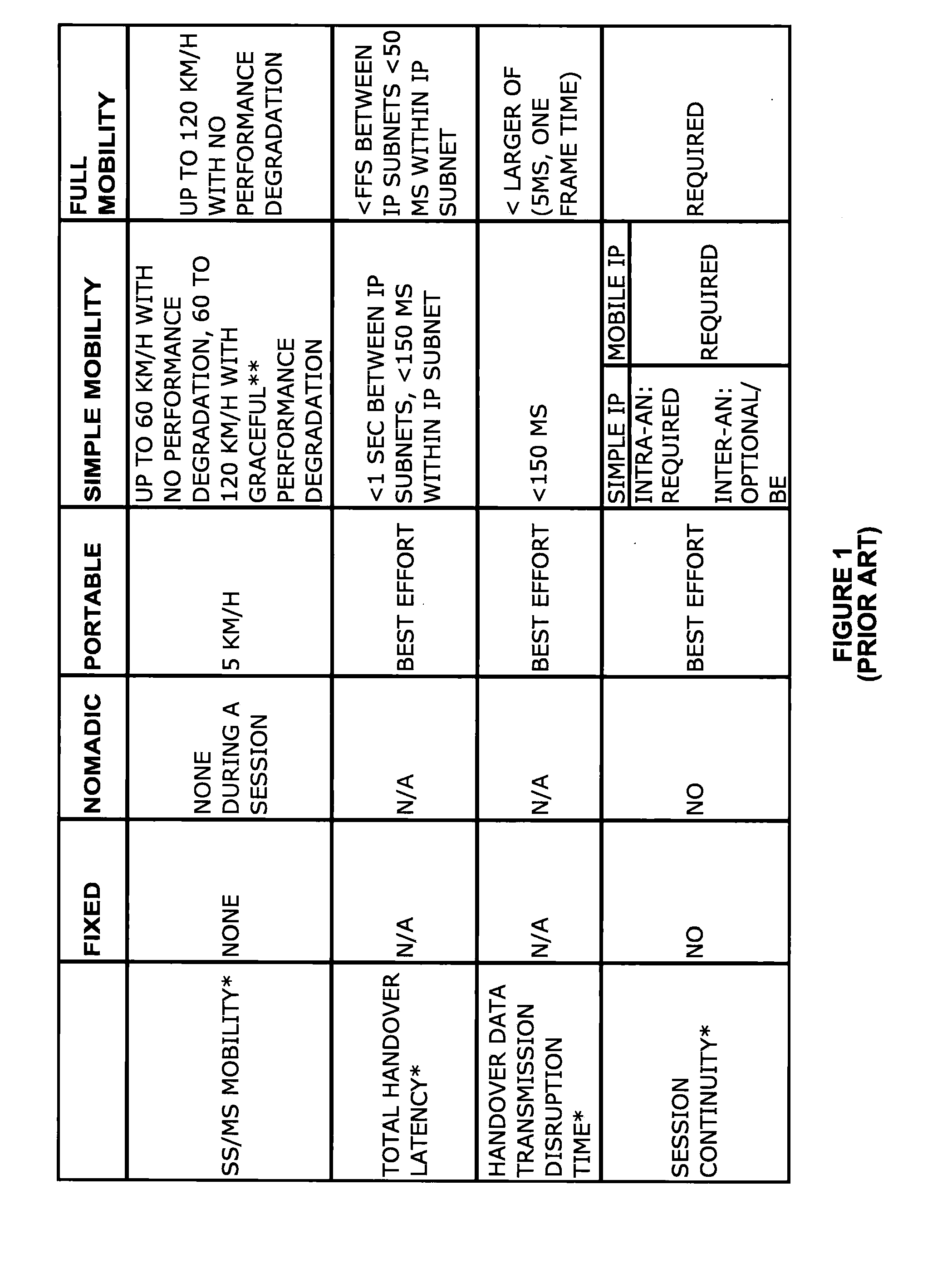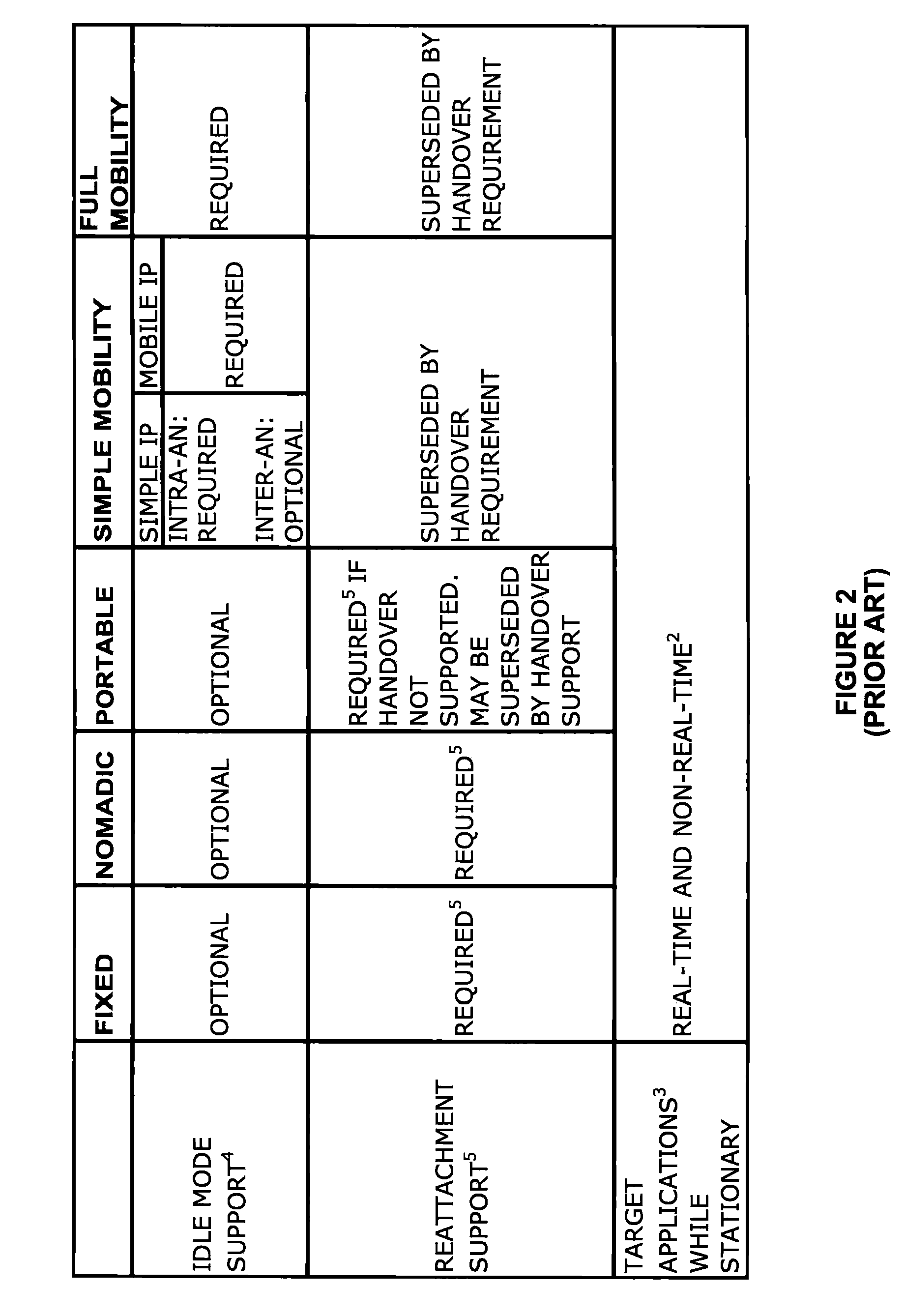Extensible micro-mobility wireless network architecture
a wireless network and micro-mobility technology, applied in the field of wireless communication systems, can solve the problems of difficulty in vertical roaming, difficulty in navigating varying quality of service, difficulty in navigating different roaming policies and prices,
- Summary
- Abstract
- Description
- Claims
- Application Information
AI Technical Summary
Problems solved by technology
Method used
Image
Examples
Embodiment Construction
[0065]The following list of abbreviations may be useful in understanding the technology discussed herein:[0066]3G Third Generation (Cellular)[0067]AAA Authentication, Authorization and Accounting[0068]AN Access Network[0069]AP Access Point[0070]ARP Address Resolution Protocol[0071]ASN Access Service Network (Same as AN)[0072]ASN-GW Access Service Network Gateway (router)[0073]BS Base Station[0074]CMIP Client Mobile IP[0075]CSN Core Services Network[0076]DHCP Dynamic Host Configuration Protocol[0077]DNS Domain Name Service[0078]FA Foreign Agent[0079]HA Home Agent[0080]IEEE Institute of Electrical and Electronic Engineers[0081]IETF Internet Engineering Task Force[0082]IOT Inter Operability Tests[0083]IP Internet Protocol[0084]L2 Layer 2[0085]L3 Layer 3[0086]LAN Local Area Network[0087]MAC Media Access Control[0088]MAN Metro Area Network[0089]MEF Metro Ethernet Forum[0090]MIP Mobile IP[0091]MPLS Multi Protocol Label Switching[0092]MS Mobile Station[0093]NAP Network Access Provider[0094...
PUM
 Login to View More
Login to View More Abstract
Description
Claims
Application Information
 Login to View More
Login to View More - R&D
- Intellectual Property
- Life Sciences
- Materials
- Tech Scout
- Unparalleled Data Quality
- Higher Quality Content
- 60% Fewer Hallucinations
Browse by: Latest US Patents, China's latest patents, Technical Efficacy Thesaurus, Application Domain, Technology Topic, Popular Technical Reports.
© 2025 PatSnap. All rights reserved.Legal|Privacy policy|Modern Slavery Act Transparency Statement|Sitemap|About US| Contact US: help@patsnap.com



